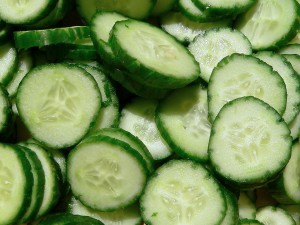The stories I have about cucumbers.
But I’ve already been threatened with one lawsuit, and will not indulge further, other than the facts.
The Public Health Agency of Canada is collaborating with provincial public health partners, the Canadian Food Inspection Agency and Health Canada to investigate an outbreak of Salmonella infections involving five provinces: British Columbia, Alberta, Saskatchewan, Manitoba, and Quebec. The illness reported in Quebec was related to travel to British Columbia. At this time, there is no evidence to suggest that residents in eastern Canada are affected by this outbreak.
Based on the investigation findings to date, exposure to long English cucumbers has been identified as the likely source of the outbreak. Many of the individuals who became sick reported eating long English cucumbers before their illness.
(Those would be the ones grown in greenhouses, but I’m just speculating, rather than inviting a lawsuit from the Ontario Greenhouse Vegetable Growers who like to intimidate with threats of lawsuits, but know shit about growing up in Southern Ontario; bring it on).
As of November 27, 2018, there have been 55 laboratory-confirmed cases of Salmonella Infantis illness investigated in the following provinces: British Columbia (47), Alberta (5), Saskatchewan (1), Manitoba (1), and Quebec (1). The individual from Quebec reported traveling to British Columbia before becoming ill. Individuals became sick between mid-June and late-October 2018. Eleven individuals have been hospitalized. No deaths have been reported. Individuals who became ill are between 1 and 92 years of age. The majority of cases (60%) are female.













